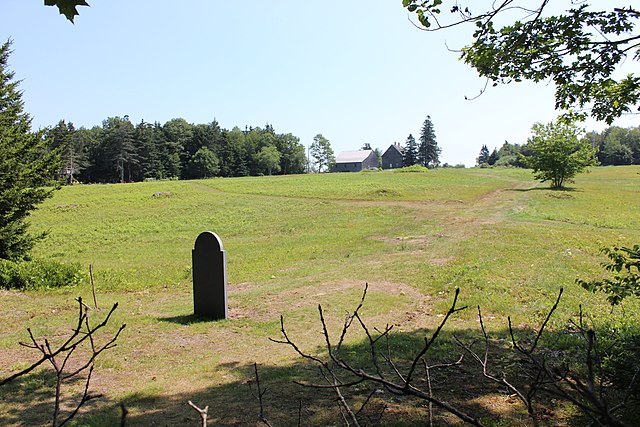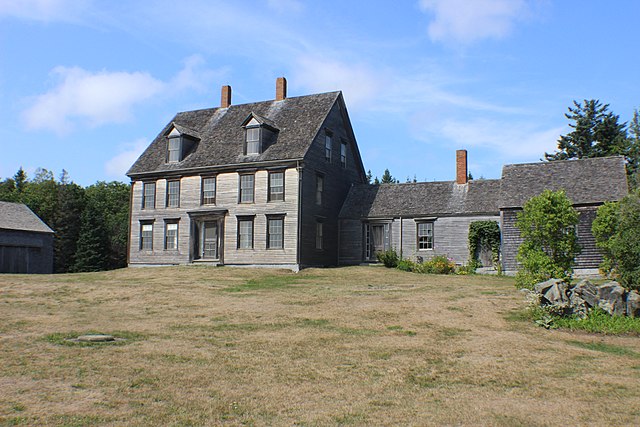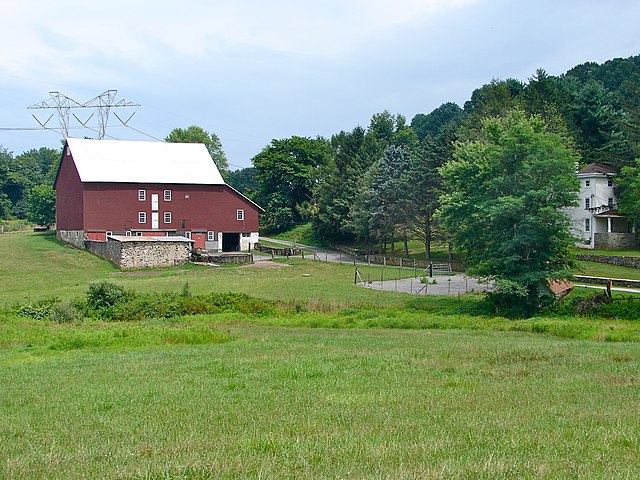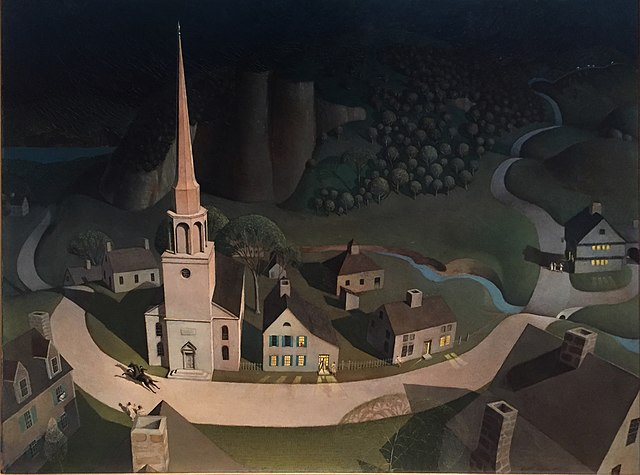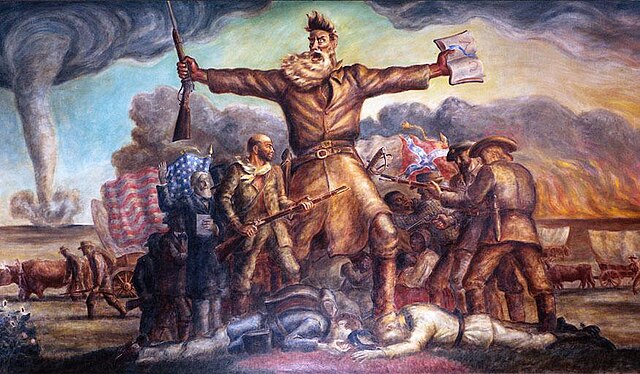Andrew Newell Wyeth was an American visual artist, primarily a realist painter, working predominantly in a regionalist style. He believed he was also an abstractionist, portraying subjects in a new, meaningful way. The son of N. C. Wyeth and father of Jamie Wyeth, he was one of the best-known U.S. artists of the middle 20th century. James H. Duff explores the art and lives of the three men in An American Vision: Three Generations of Wyeth Art. Raised with an appreciation of nature, Wyeth took walks that fired his imagination. Henry David Thoreau, Robert Frost, and King Vidor's The Big Parade (1925) inspired him intellectually and artistically. Wyeth featured in a documentary The Metaphor in which he discussed Vidor's influence on the creation of his works of art, like Winter 1946 and Portrait of Ralph Kline. Wyeth was also inspired by Winslow Homer and Renaissance artists.
N. C. Wyeth in his studio with a cowboy model
Grave of Andrew Wyeth, with the Olson House in the background, Cushing, Maine
Olson House, Cushing, Maine
Kuerner Farm, in Chadds Ford Township, Delaware County, Pennsylvania, named a National Historic Landmark in 2011.
American Regionalism is an American realist modern art movement that included paintings, murals, lithographs, and illustrations depicting realistic scenes of rural and small-town America primarily in the Midwest. It arose in the 1930s as a response to the Great Depression, and ended in the 1940s due to the end of World War II and a lack of development within the movement. It reached its height of popularity from 1930 to 1935, as it was widely appreciated for its reassuring images of the American heartland during the Great Depression. Despite major stylistic differences between specific artists, Regionalist art in general was in a relatively conservative and traditionalist style that appealed to popular American sensibilities, while strictly opposing the perceived domination of French art.
The Midnight Ride of Paul Revere (1931) by Grant Wood, Metropolitan Museum of Art, New York City, NY
Grant Wood, American Gothic, 1930, Art Institute of Chicago, Chicago, IL
Thomas Hart Benton, People of Chilmark (Figure Composition), 1920, Hirshhorn Museum and Sculpture Garden, Washington, DC
John Steuart Curry, Tragic Prelude, 1938–1940, Kansas State Capitol, Topeka


